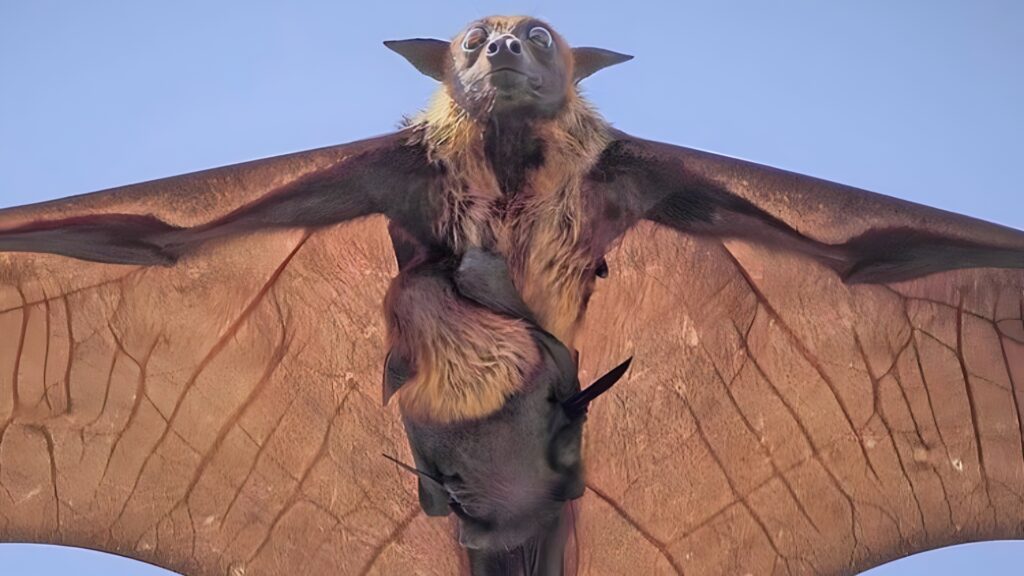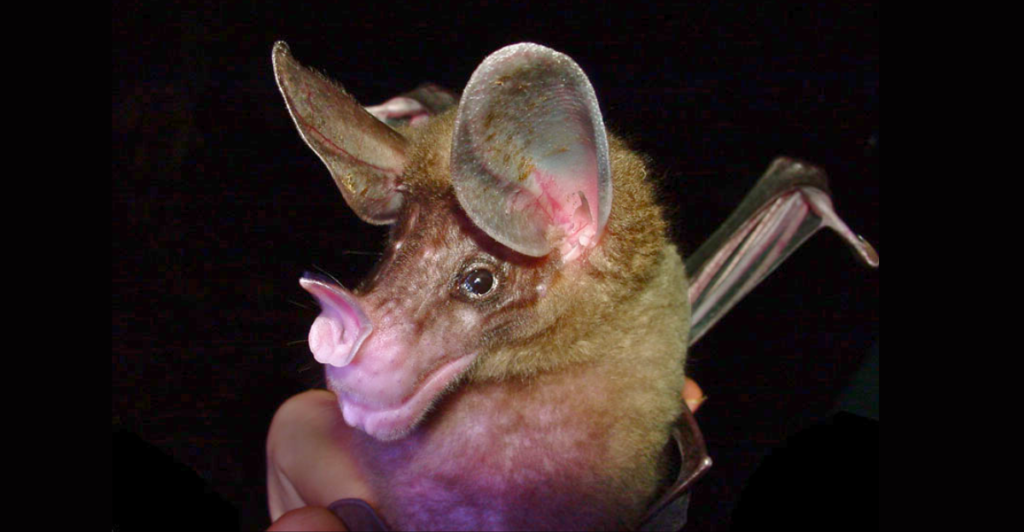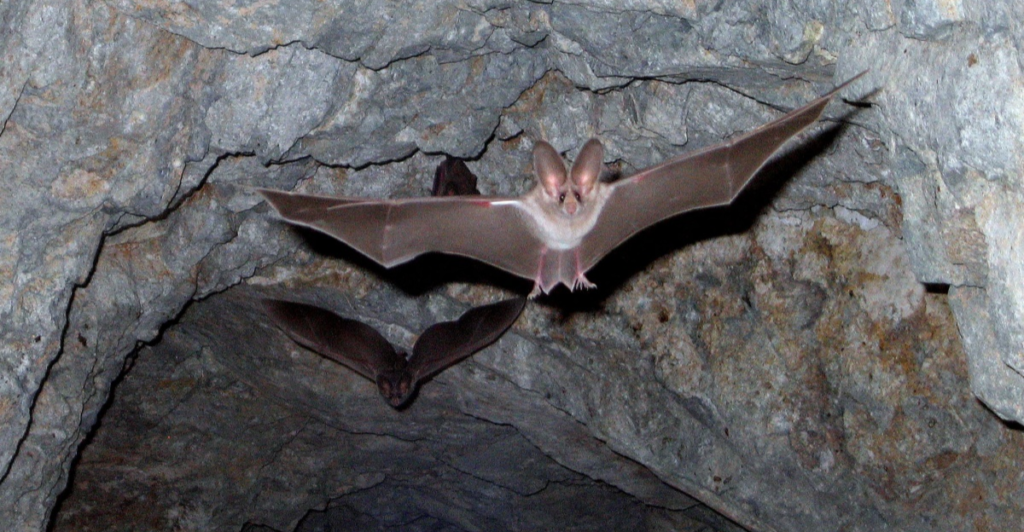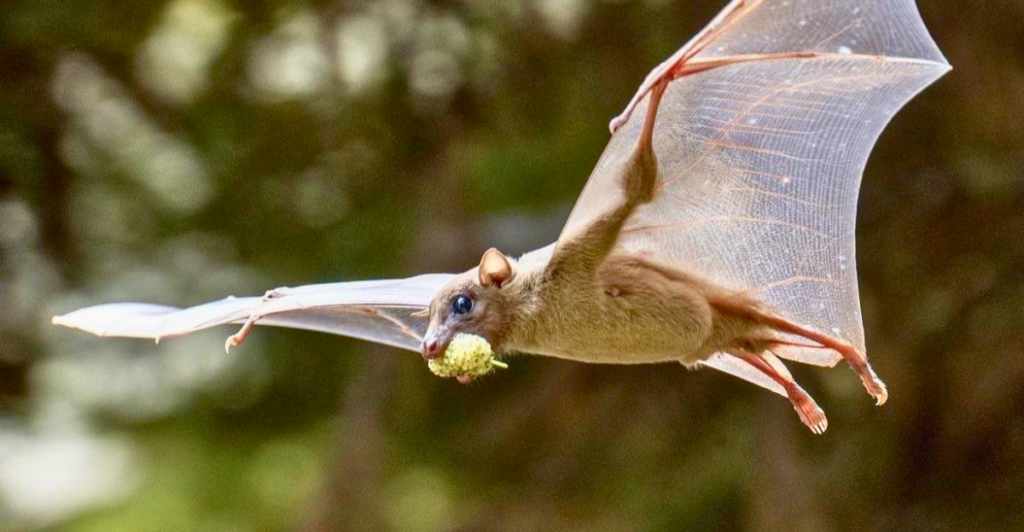
Bats are some of the most fascinating and misunderstood creatures in the animal kingdom. These nocturnal wonders play essential roles in ecosystems worldwide, from pollinating plants to controlling insect populations. With over 1,400 species, bats come in a variety of shapes and sizes, each with unique adaptations that defy expectations. Let’s take a look at the top ten most amazing facts about bats!
1. Echolocation Mastery

Bats’ echolocation is a marvel of nature. They emit high-frequency sounds from their mouth or nose, which bounce off objects in their environment. The returning echoes provide bats with detailed information about the size, shape, and texture of objects, as well as their distance and velocity. This allows bats to navigate through complex environments and locate tiny insects with pinpoint accuracy, even in complete darkness. Some species can detect objects as thin as a human hair.
2. Diverse Diets

The dietary diversity of bats is remarkable. While about 70% of bat species are insectivores, others have evolved to feed on a wide range of food sources. Fruit bats play crucial roles in seed dispersal and pollination. Nectar-feeding bats have long tongues and snouts adapted for reaching deep into flowers. Some species, like the fish-eating bat, have evolved large feet and claws to snatch fish from water surfaces. The vampire bat, found in Central and South America, has a specialized digestive system for processing blood.
3. Size Extremes

The size range in bats is astounding. The bumblebee bat, also known as Kitti’s hog-nosed bat, weighs only 2 grams and is arguably the world’s smallest mammal. On the other end of the spectrum, the giant golden-crowned flying fox can have a wingspan of up to 5.6 feet. This incredible size range demonstrates the adaptability of bats to various ecological niches.
4. Upside-Down Sleepers

Bats’ ability to hang upside down is due to a unique tendon-locking mechanism in their feet. When a bat grasps a surface, the weight of its body pulls on the tendons in its legs, causing its toes to clench tightly around the perch. This allows bats to sleep securely without expending energy to hold on. When they’re ready to fly, they simply let go and fall into flight, giving them a quick escape from predators.
5. Longevity Champions

Despite their small size and high metabolic rates, many bat species have surprisingly long lifespans. The Brandt’s bat, for example, can live up to 40 years in the wild. This longevity is thought to be related to their ability to enter torpor, a state of decreased physiological activity, which may reduce oxidative stress and slow the aging process. Researchers are studying bat longevity for insights into human aging.
6. Speed Demons

The Mexican free-tailed bat holds the record for the fastest horizontal speed of any animal. These bats have been recorded flying at speeds up to 100 mph in level flight. Their streamlined bodies and long, narrow wings contribute to their incredible speed, which they use to cover vast distances during migration and to catch fast-flying insects.
7. Hibernation Experts

Many bat species enter a state of hibernation during winter months when food is scarce. During this time, they can lower their body temperature to near freezing and reduce their heart rate from several hundred beats per minute to just a few. Some species, like the little brown bat, can go without breathing for almost an hour during deep hibernation. This remarkable ability allows them to conserve energy and survive long periods without food.
8. Ecological Importance

Bats play critical roles in many ecosystems. Insectivorous bats are natural pest controllers, with some species capable of consuming up to 1,200 mosquito-sized insects per hour. Fruit bats are essential seed dispersers in tropical and subtropical regions, helping to regenerate cleared or damaged rainforests. Nectar-feeding bats pollinate many important plant species, including agave and durian. The economic value of bats to agriculture is estimated to be billions of dollars annually.
9. Unique Adaptations

Bats have evolved numerous unique adaptations. The pallid bat, for instance, has developed a tolerance to scorpion venom, allowing it to prey on these dangerous arachnids. Some bat species, such as leaf-nosed bats, have evolved specialized nose leaves to focus their echolocation calls. The Honduran white bat creates tent-like shelters by cutting and folding leaves, blending in with the dappled sunlight of its tropical forest habitat.
10. Fertilizer Producers

Bat guano is a highly prized natural fertilizer due to its high concentrations of nitrogen, phosphorus, and potassium. In some regions, bat guano mining has been a significant industry. The Carlsbad Caverns in New Mexico, for example, was initially explored for its guano deposits. Beyond its use as fertilizer, bat guano supports entire ecosystems within caves, providing nutrients for a variety of unique and often rare species.
11. Honorable Mention: Diverse Habitats

Bats have adapted to an incredibly wide range of habitats. While many species roost in caves, others have found homes in tree hollows, rock crevices, and even human structures. Some bats, like the Honduran white bat, create “tents” by biting the veins of large leaves, causing them to fold into protective shelters. Urban-adapted bats can be found roosting in buildings, bridges, and other structures in cities worldwide.
12. Honorable Mention: Mammalian Flight Pioneers

Bats are the only mammals capable of true, sustained flight. Their wings are actually elongated hands with a thin membrane of skin stretched between the fingers. This unique adaptation allows for incredible maneuverability in flight. Unlike birds, which have rigid wings, bats can change the shape of their wings during flight, giving them unparalleled agility in the air.
Source:
Disclaimer: This article was written with the assistance of AI and was edited/fact-checked by a human.
Stay connected with us for more stories like this! Follow us to get the latest updates or hit the Follow button at the top of this article, and let us know what you think by leaving your feedback below. We’d love to hear from you!







